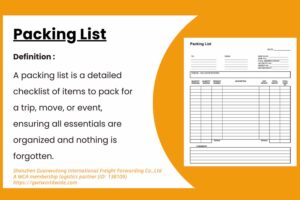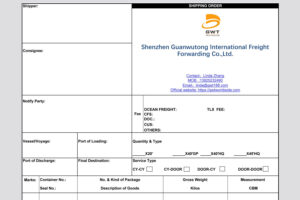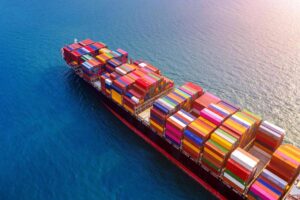중국에서 원스톱 운송 수입: 통관 및 현지 배송
GWT는 중국에서 목적지까지 원스톱 운송 서비스를 제공합니다. 중국에서 상품을 수입하려면 단순한 배송 외에도 몇 가지 중요한 단계가 필요합니다. 원활한 수입 절차를 위해서는 현지 통관 및 육상 운송에 대한 이해가 필수적입니다. 이 가이드는 배송업체와 수취인이 이러한 복잡한 과정을 탐색하는 데 도움이 되는 자세한 개요를 제공합니다.

중국에서 가져오기 소개
가져오기 프로세스 개요
중국으로부터의 수입에는 제품 소싱, 조건 협상, 배송 물류 관리, 수출국과 수입국 모두의 규정 준수 여부 확인 등이 포함됩니다.
현지 규정 이해의 중요성
각 국가마다 수입에 적용되는 고유한 규칙과 규정이 있습니다. 지연, 추가 비용 또는 법적 문제를 피하려면 이러한 규정을 숙지하는 것이 중요합니다.
목적지 국가의 통관 절차
통관의 주요 단계
문서 제출: 선하증권(B/L), 상업 송장, 포장 목록 등 필요한 서류를 세관 당국에 제출합니다.
세관 검사: 상품이 현지 법률을 준수하는지 확인하기 위해 검사를 받을 수 있습니다.
관세 및 세금 납부: 해당 관세 및 세금을 계산하고 납부합니다.
필요한 서류
선하증권(B/L)
상업 송장
포장 목록
원산지 증명서
라이선스 가져오기(해당되는 경우)
일반적인 과제 및 솔루션
문서화 지연: 제출하기 전에 모든 문서가 완전하고 정확한지 확인하세요.
예상치 못한 업무: 세관 중개인에게 문의하여 잠재적 비용을 파악하세요.
현지 육상 운송
적합한 교통수단 선택하기
트럭 운송: 단거리에서 중거리 및 유연한 배송 일정에 이상적입니다.
Rail: 장거리 대량 배송에 비용 효율적입니다.
택배 서비스: 긴급한 소규모 배송에 적합합니다.
현지 물류 제공업체와의 협력
평판이 좋은 물류 제공업체와 협력하여 적시에 효율적으로 배송하세요. 현지 교통 패턴과 규정에 대한 귀중한 인사이트를 제공할 수 있습니다.
비용 고려 사항
연료 비용: 연료 가격 변동은 운송 비용에 영향을 줄 수 있습니다.
통행료 및 수수료: 추가 도로 또는 항만 요금에 유의하세요.
효율적인 가져오기를 위한 모범 사례
화물 운송업체와 협력
화물 운송업체는 배송부터 통관까지 복잡한 물류를 처리할 수 있으므로 다른 비즈니스 측면에 집중할 수 있습니다.
추적 및 관리를 위한 기술 활용
디지털 도구와 플랫폼을 사용하여 배송을 실시간으로 추적하고 재고를 관리하세요.
현지 파트너와의 강력한 관계 구축
현지 세관 중개인, 물류 제공업체 및 공급업체와의 관계를 발전시키면 운영을 간소화하고 커뮤니케이션을 개선할 수 있습니다.
규정 준수 및 위험 관리
관세 및 관세 이해
제품에 영향을 미치는 최신 관세 및 관세에 대한 정보를 파악하여 예상치 못한 비용을 피하세요.
위험 완화 및 처벌 방지
보험: 운송 중 발생할 수 있는 손상이나 분실로부터 상품을 보호하세요.
규정 준수 감사: 정기적인 감사를 통해 규정을 준수할 수 있습니다.
규정 변경 사항에 대한 최신 정보 유지
무역 협정 및 수입 규정의 변경 사항을 파악하여 규정을 준수하고 수입 전략을 최적화하세요.
결론
중국에서 성공적으로 수입하려면 특히 통관 및 현지 운송과 관련하여 신중한 계획과 실행이 필요합니다. 이러한 프로세스를 이해하고 모범 사례를 구현함으로써 배송업체와 수하인은 원활하고 효율적인 수입 경험을 보장할 수 있습니다.
































